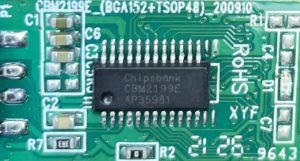USB flash drives are convenient, but if you’re carrying a storage device in your pocket, you’re taking certain risks. We frequently receive flash drives that have been cracked open, snapped in half, or washed in the laundry — obviously, those aren’t ideal scenarios.
While most cases are recoverable, the resources required for successful USB drive repair can vary greatly depending on the extent of the damage. To determine whether your data can be restored, you’ll need a professional media evaluation.
Get started by setting up a case online or read on to learn the basics of flash media recovery.
USB Drive Data Recovery: A Quick Overview
USB drives use a type of non-volatile storage technology called NAND flash memory. NAND uses electric circuits to store data; if those circuits are destroyed, the data is not recoverable.
Fortunately, this is rare. USB drives consist of a NAND memory chip with point-to-point signal traces that allow the memory to “talk” with your computer via the USB port.
When you physically break a USB drive, you’ll usually damage those data traces, but they may be repairable. By resoldering the circuit board, data recovery engineers can restore data access through the device’s standard interface.
Related: Can You Recover Deleted Files From an SSD?
Recovering Data from Severely Damaged USB Drives
 In some cases, repairing the data traces isn’t practically possible. If the standard interface is too damaged, the engineer will need to remove the NAND chip(s), then connect it to an adapter.
In some cases, repairing the data traces isn’t practically possible. If the standard interface is too damaged, the engineer will need to remove the NAND chip(s), then connect it to an adapter.
This isn’t as easy as it sounds: There are an enormous number of NAND chips on the market, and there’s no single adapter that matches the architecture for all of them. The recovered data must also be reconstructed into a logical sequence.
So, what if the NAND chip itself is damaged? This is rare — most USB drives don’t break right at the NAND chip — but it’s not good news for data recovery efforts.
The chip contains a small slice of semiconductor (a silicon wafer), which is extremely susceptible to physical damage. That’s one of the reasons that data recovery engineers work in certified clean rooms when treating NAND devices: Silicon is sensitive stuff.
Even if a NAND chip is damaged, data recovery may be possible depending on:
- The type of NAND flash memory.
- The size and complexity of the files.
- The client’s budget.
In general, flash data recovery is quite affordable, but NAND damage can greatly increase the costs.
Recover Files from Damaged Flash Media with Datarecovery.com
If you’ve lost data from a USB device due to physical damage, we’re here to help. We start every case with a risk-free media evaluation, which provides our clients with a price quote, turnaround time, and the estimated chances of a successful case result.
Features of our flash media recovery services include:
- Industry-leading data recovery technology.
- Certified cleanrooms at every location.
- Full support for every type of flash device.
- Multiple service options, including 24/7 emergency data recovery services.
Each of our full-service laboratories is equipped to handle NAND media. To learn more, get a free quote online or call us at 1-800-237-4200.





